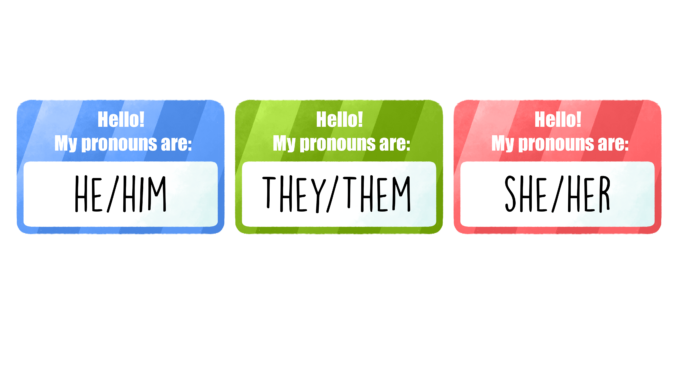
By Shawn McCrea/ Staff Reporter
He, she, you, it, they, him, her, theirs are all examples of pronouns.
Pronouns are versatile words that are used in sentences as substitutes for nouns.
Some are used in singular situations. You read “The Ranger.” She reads “The Ranger.” He reads “The Ranger.” But others are used in plural situations. They read “The Ranger.”
In the English language, grammatical tradition has defined the pronoun ‘they’ to signify a group of individuals. Additionally, ‘they’ has been used to describe an individual when the gender is unknown.
But what happens when someone doesn’t want to subscribe to the gender binary and wants to express their identity in ways that are outside the norm?
“I’ve never really put thought into it because I’m used to ‘he’ and ‘she,’” Ashley Denham, a general studies major, said.
“It’s a new thing to a lot of people. My family, where I grew up, it’s very traditional. It’s very new to us,” Denham said.
The concept of nonbinary pronouns is new to many people. Even though the experiences of nonbinary individuals are gaining public attention, according to a September 2019 Pew Research Center survey, only about 18 percent of Americans say that they know someone personally who prefers a pronoun other than ‘he’ or ‘she.’
For individuals who identify as nonbinary — a term often put under the transgender umbrella meaning identifying as neither male or female — the gendered pronouns of ‘he’ and ‘she’ can be restrictive obstacles to expressing the way they perceive their sense of identity.
Amber White, a licensed clinical social worker and coordinator of the Amarillo College Counseling Center, said that many people who struggle with gender identity tend to be at higher risk for depression, anxiety and suicidal thoughts.
“They’re already a vulnerable population,” White said. “It’s important for people to be mindful, to be open, and to be sensitive to other people.”
“All of us, as humans, are seeking validation. So whenever a person is able to be recognized and identified as the pronouns they prefer, it validates them as a human being.”
Ari Jines, a graphic design major, said that they use they/them/theirs pronouns because “that’s who I am and what I’m most comfortable with. It’s mainly just who I am and I know what I want to be.”
But sometimes, people can refer to nonbinary individuals with the pronouns — whether it be intentional or not — that don’t align with their affirmed gender. This is called misgendering.
Jines said being misgendered is irritating “but since it’s been a thing for so long, I’m just like ‘OK.’ I want people to use ‘them,’ but I don’t know if I have the energy to deal with them.”
For nonbinary people such as Jines, it can often be a lot of work to try to correct people when they misgender them. Jines said it can become especially tiresome when one has to correct multiple people several times a day.
Jines and other nonbinary students said the easiest and most effective way to show support for nonbinary individuals is not to assume what their gender identity is from their appearance or fashion choice. Avoiding gendered language (words like ‘ma’am’ or ‘sir) is another way.
“If you don’t know someone’s pronouns—ask,” Max Haywood, a photography major, said. “Always ask. Anyone who’s not cisgendered does not mind being asked about pronouns.”
“If someone were to ask ‘What are your pronouns?’ I’d be happy to answer,” Haywood said. “I wouldn’t see that as rude or disrespectful,” said Haywood, who uses he/him/his pronouns.
Daniar Onoz, a graphic design major, admits that it might take some time to get used to using “they” to refer to one person.
“It was a little bit confusing for me at first,” Onoz said. “Whenever I tried to refer to them as ‘they,’ I kept referring to them as ‘she.’ I still see my friend as the same person. Someone might go by ‘they’ but I still see them as one of my friends.”

Leave a Reply